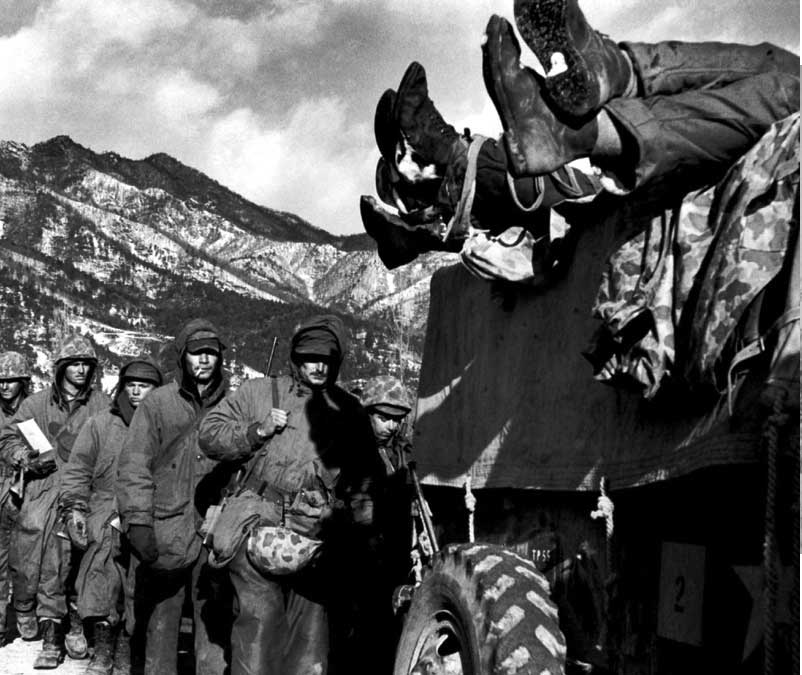VIDEO
The United Nations troops resumed their offensive on November 24, 1951 . The offensive began on the west with Walker's 8th. In the meantime, the Marines were to advance on the east. The first day of the Walker Offensive went well. On the 26th, the Chinese attacked on the inland flank. They first swamped the South Korean II Corps, and then the attack spread along the whole line. The American offensive had come to an end, and instead the retreat was about to begin. The Americans were not facing a maximum of 100,000 Chinese troops as they expected, but instead an army of 300,000 men. The Chinese managed to outflank the American forces. A Turkish division attempted to hold the flank, but was decimated. Now Walker's Army was forced to fight its way out. As the 2nd division headed south, it was ambushed along a five-mile stretch of the road called "the pass." An entire Chinese division attacked them; only the Airforce managed to extract them. Only 4,000 of the 7,000 who started through the pass made it. The retreat was now in full progress. The 8th Army was forced to withdraw from the North Korean capital Pyongyang. South Korean troops moving north towards the Yalu ran into a force of Chinese soldiers. Within a few minutes, the more numerous Chinese force had decimated the Korean force. In the next few days, more and more South Korean units ran into Chinese units, each with similar results. Initially, the American headquarters dismissed the reports, but it soon became clear that the Chinese were in the war in a major way. At noon of November 1, a battalion of the 24th Infantry Division reached Chonggodong, 18 miles south of the Yalu. The battalion was commanded by Lt. Col. Charles Smith, the commander of Task Force Smith, at the outset of the war. This was the northernmost advance of US troops during the war. On November 1, the Chinese struck the USA 1 Cavalry Division and the ROK II Corps. In the course of two days, the Chinese decimated the Korean forces and forced the American forces to pull back after inflicting very heavy casualties on the Americans. The Chinese paused after this attack; they seemed to be sending a message that they were here in force and could not be stopped. The American command did not hear the message, and instead thought that the Chinese had tried but could do no more. Thus, they planned to resume the offensive towards the Yalu.

